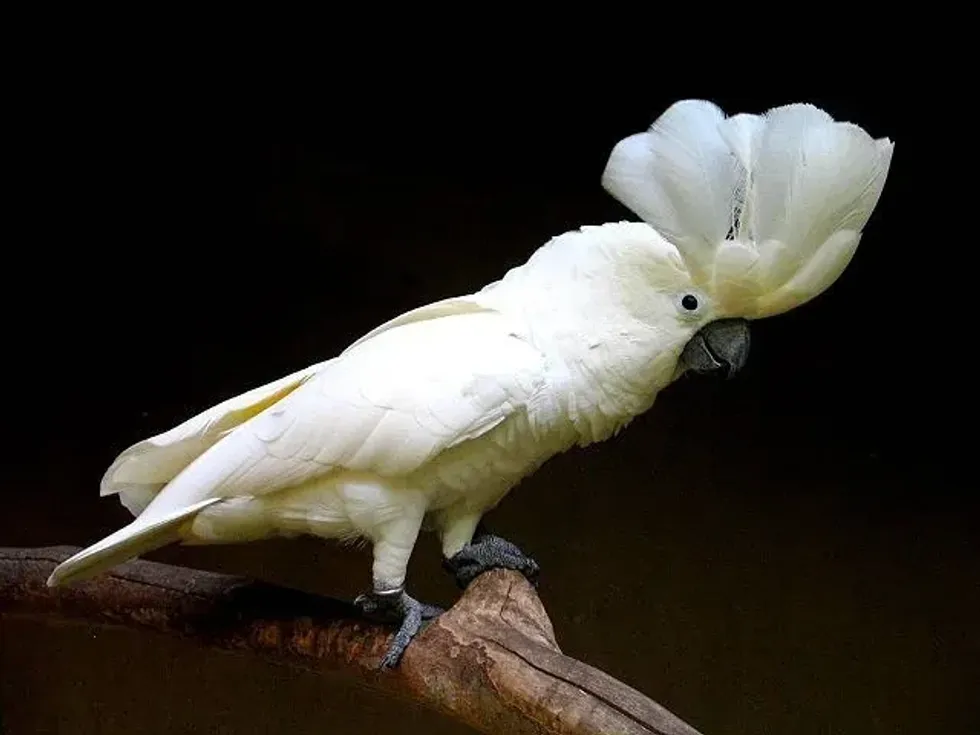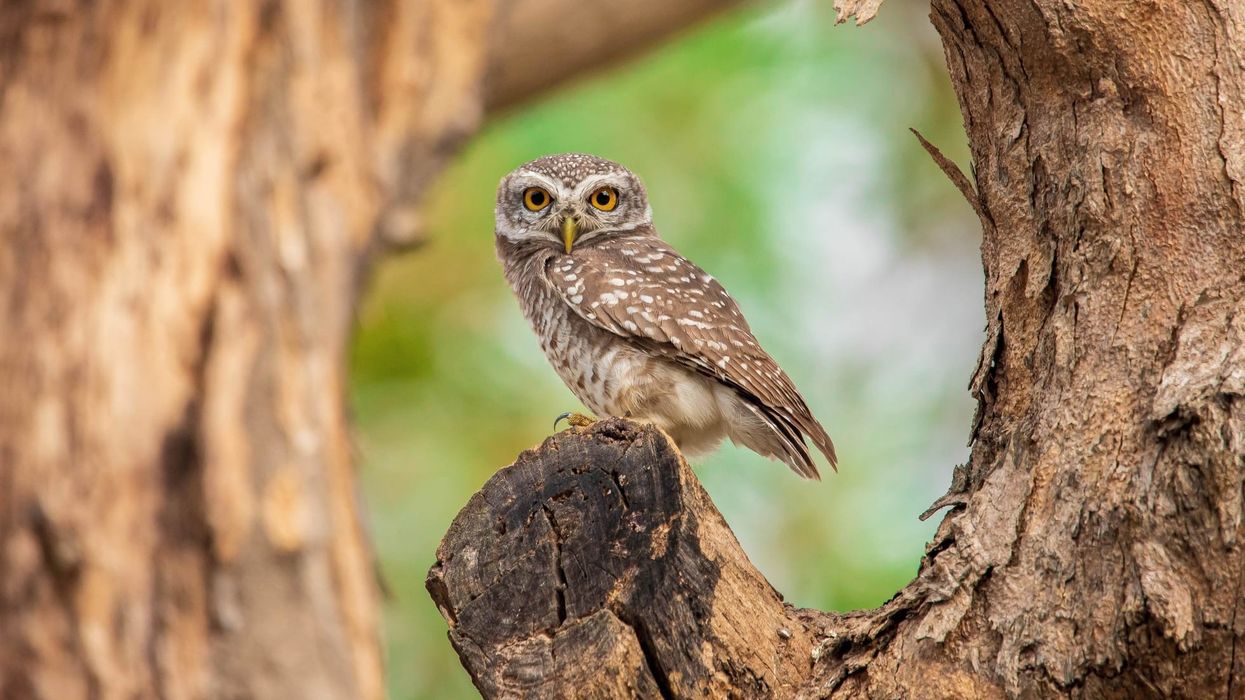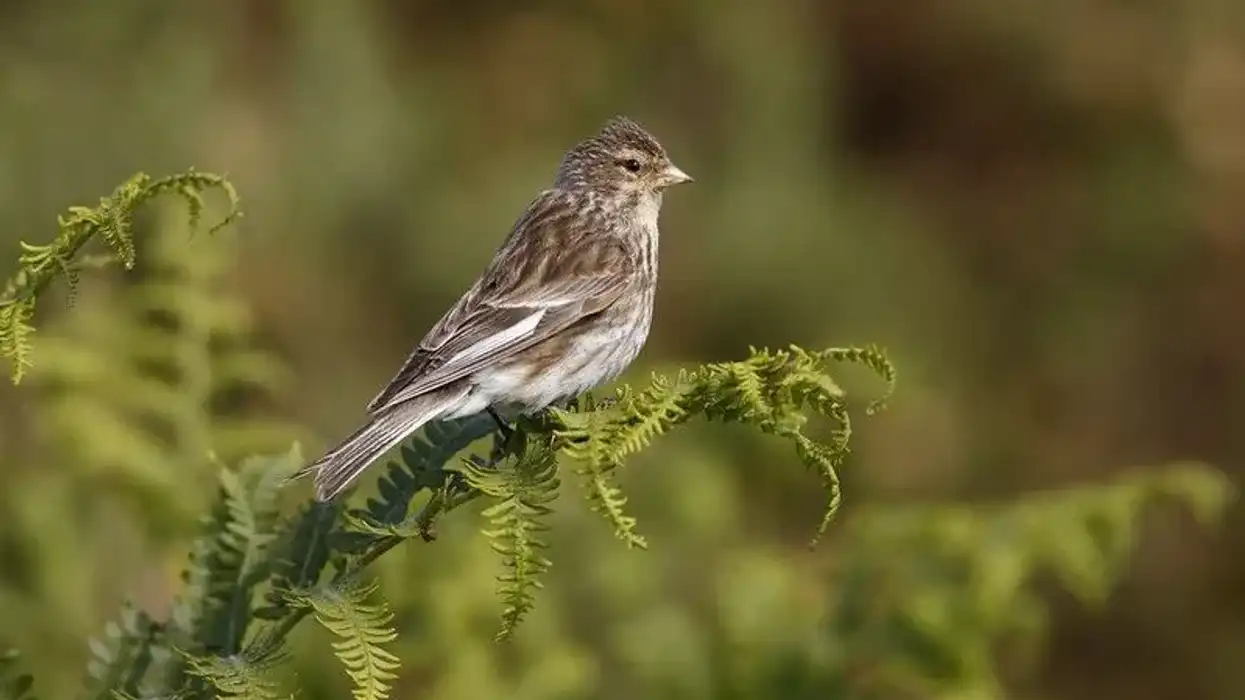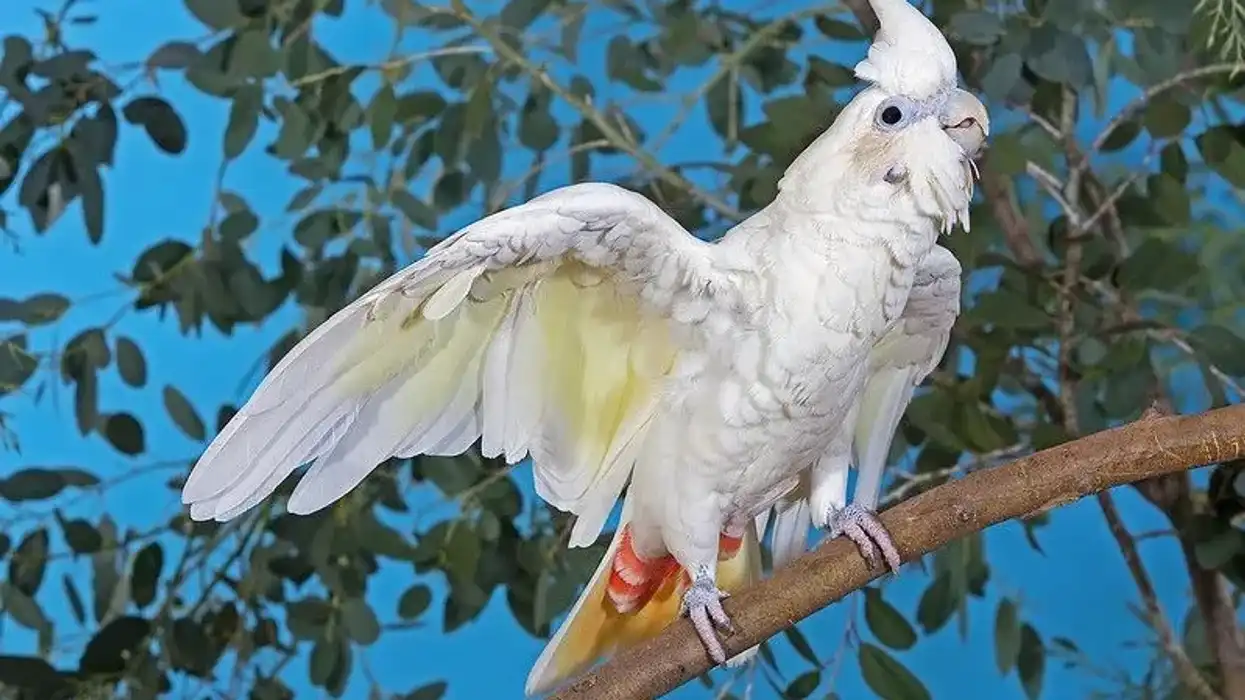The vibrant and graceful entourage of tropical birds is incomplete without the umbrella cockatoo, also known as the white cockatoo, named after their striking and characteristic crest on the crown that fans out like an umbrella when erect.
This cockatoo species is native to Indonesia's tropical rainforests and are popular companion birds, kept as pets for their sheer beauty and affectionate nature.
At first glance, these charming creatures may seem like any other cockatoo bird. However, a closer look shows that it is the elegant fan-like crest feathers that make them stand out from the other species.
No doubt, it is rightly known as the great-white crested cockatoo as well!
Slightly smaller than the Moluccan cockatoo, the umbrella cockatoo species native of Indonesia is no less than others when it comes to personality and glamor. Often labeled as clingy and demanding an overwhelming amount of attention, these cockatoos with crests are not for indifferent and apathetic owners.
Does the umbrella cockatoo or white cockatoo sound like an interesting bird species? Read on, and you will not be disappointed! If you like what you read, do check out facts about the yellow-billed cuckoo and house finch.
Umbrella Cockatoo Interesting Facts
What type of animal is an umbrella cockatoo?
Umbrella cockatoos or white cockatoos are one of the several species of cockatoo birds of the family Cacatuidae.
What class of animal does an umbrella cockatoo belong to?
The umbrella cockatoo (Cacatua alba) belongs to class Aves, which includes all birds.
How many umbrella cockatoos are there in the world?
Recent estimates suggest that the global population size of the umbrella cockatoos ranges between 50,000-200,000 birds.
Where does an umbrella cockatoo live?
The white umbrella cockatoo is a natural inhabitant of North Moluccas of the Maluku Islands of Indonesia. They are found on the islands of Mandioli, Tidore, Kasiruta, Ternate, Bacan, and Halmahera.
What is an umbrella cockatoo's habitat?
The umbrella cockatoos are inhabitants of lowland tropical rainforests and primarily occupy wooded areas. Members of the species may also be found living in open woodlands, swamps, mangroves, agricultural areas, around rivers, and on the edge of clearings.
These birds prefer tall secondary vegetation and spend most of their time amidst tree canopies. Their habitat is limited to elevations of 984-2,953 ft (300-900 m) above sea level.
When kept as pets, these cockatoos require a large cage with enormous living space and preferably a play stand. These birds do not fancy containment; keeping them in a small and tight space will lead to illness or self-mutilation.
Who do umbrella cockatoos live with?
All cockatoo species live together in flocks in the wild. While some cockatoo birds may flock in thousands, others may form small groups of only 8-10 individuals.
In fact, these birds have such high socialization needs that they will literally get bored if not given oodles of attention and interaction. A good environment has significant effects on the umbrella cockatoo behavior. Hence, when kept as pet birds, they thrive best as pairs.
Their active nature and constant need for companionship make them ever ready to play and interact with a friend, be it a human or another bird. These cockatoos also get along well with other birds of a similar size.
The sole reason for keeping the birds in a pair is that it saves the owner's time and energy; a single cockatoo kept as a pet will demand all of the owner's time, affection, and attention and require the owner to play and interact with the bird on a regular basis.
Bored cockatoos develop notorious habits like feather plucking and screeching.
How well these birds get on with pets like cats and dogs varies with circumstances and needs to be monitored. Rodents and small birds are best kept away from the cockatoo bird to avoid accidents inflicted by its beak.
How long does an umbrella cockatoo live?
The umbrella cockatoo lifespan in the wild is around 30 years. In captivity, the life span of the bird can be more than 40 years.
How do they reproduce?
Like any other bird, the mating of the umbrella cockatoos is preceded by an elaborate courtship ritual. The breeding season occurs once a year, and during this time, the mating pair separates from the flock and finds a nesting spot on a tree, which is usually 16-98 ft (5-30 m) above the ground.
After mating, the females lay a clutch of a maximum of two eggs and rarely three.
The eggs take about 30 days to hatch, and during this incubation period, both the parents participate in looking after the eggs.
The chicks learn to fly at about three months of age, but they do not become fully independent until 3.5-4 months. Both males and females of the species reach reproductive maturity at five or six years of age.
What is their conservation status?
According to the International Union for Conservation of Nature (IUCN) Red List of Threatened Species, umbrella cockatoos are Endangered in the wild with a decreasing population trend.
Umbrella Cockatoo Fun Facts
What do umbrella cockatoos look like?
The feathers of the umbrella cockatoos are mostly white with a hint of yellow on the undersides of its wings and tail feathers. Both the males and females of the species have a tuft of broad and backward bending crest feathers on the head that fans out when erect.
Both the beak and the legs are dark gray, with short white feathers covering the upper parts of the legs. The beaks are strong enough to crack nuts or inflict injury.
The beak and head of the females are usually smaller than the males. The feet are zygodactyl, meaning that two toes on the feet are forward-facing, and the other two face backward.
The zygodactyl feet help the bird to grasp on to object with one foot and stand on the other while feeding or for other activities. Depending on the gender, the eyes may be brown or black.
How cute are they?
Not just cute, this bird with milky white feathers is an absolute beauty when its crest is erect and spread out like a fan.
How do they communicate?
The umbrella cockatoos are extremely vocal birds and can make very loud noises. They emit loud screeches or screams when locked up in a cage, isolated, or not given enough attention.
In fact, the louder the screech, the more displeased and irritated the bird is.
They are one of the smartest pet birds you can find and are even capable of talking and mimicking human speech, but of course, with limited vocabulary. In the wild, these birds have also been seen banging on trees and logs with pieces of wood to announce their territory.
How big is an umbrella cockatoo?
The umbrella cockatoos have an average size of about 18 in (46 cm) with a wingspan of 10-12 in (25-31 cm). Members of the species are slightly smaller than the Moluccan cockatoo salmon-crested or pink cockatoo and the sulfur-crested cockatoo.
How fast can an umbrella cockatoo fly?
The flight of cockatoos varies with the species, with speeds of up to 43 mph (70 kph) recorded for the rose-breasted cockatoo. No information is available on the flight speed of the umbrella cockatoos.
How much does an umbrella cockatoo weigh?
An adult umbrella cockatoo can weigh between 17.6-22.2 oz (500-630 g).
What are the male and female names of the species?
Neither gender of the umbrella cockatoo species has any distinct name.
What would you call a baby umbrella cockatoo?
Like most other bird babies, an umbrella cockatoo's baby would be called a chick.
What do they eat?
The umbrella cockatoos have an omnivorous diet and consume a variety of foods. In the wild, the foods that these birds feed on the most include various seeds, berries, nuts, roots, and fruits such as rambutan, langsat, durian, and papaya.
Their diet also comprises insects and their larvae, such as skinks, crickets, and even small-sized lizards.
Corn from agricultural lands also forms a part of their diet, and these birds are considered to be quite the pests by farmers. Birds kept as a pet need the most care and may be given a diet consisting of mixed seeds, dried fruits, nuts, fruits, and vegetables.
Are they poisonous?
While the umbrella cockatoos are not particularly poisonous, their feathers do emit talcum powder-like dust, which could be a concern for owners with allergies or other respiratory problems.
Would they make a good pet?
With proper care, the umbrella cockatoos are one of the most beautiful and friendliest pets. However, they tend to be a tad bit too attention-seeking and clingy due to their sociable nature. They are smart and inquisitive, and fun to be around.
Did you know...
During the courtship ritual, the males ruffle and spread their tail feathers, extend their wings, erect their chest, and then bounce about in front of the potential mate. Successful courtship results in the partners scratching each other's head and tail.
Common health issues of the umbrella cockatoos include fatty liver disease, psittacine beak and feather disease (PBFD), and obesity.
How can you tell if an umbrella cockatoo is male or female?
A male and female white cockatoo can be told apart on the basis of their eye color. While both genders have a pale blue ring around the eyes, the females have a reddish/brownish iris, and the males have a dark brown or black iris.
The umbrella cockatoos form mating pair bonds that last throughout their lives. In fact, a cockatoo that is separated from its partner will slip into sadness.
Are umbrella cockatoos friendly?
Friendly would be an understatement since the umbrella cockatoos are way too affectionate, always wanting to be around their mate or owner. They get far too attached to any bird or object around them and like to form special bonds or friendships.
In fact, the bird is never seen without a companion in the wild. However, a pet cockatoo bird can get really neurotic if it does not get its way or is left isolated.
Here at Kidadl, we have carefully created lots of interesting family-friendly animal facts for everyone to discover! For more relatable content, check out these quail facts and kagu facts for kids pages.
You can even occupy yourself at home by coloring in one of our free printable umbrella cockatoo coloring pages.










